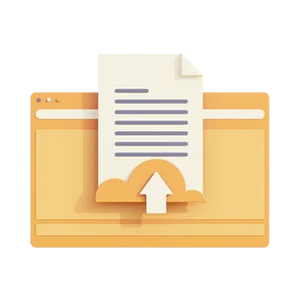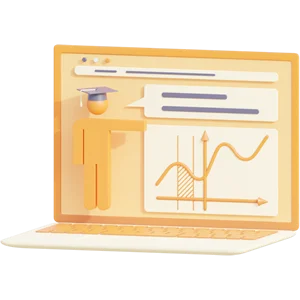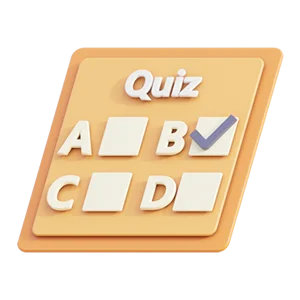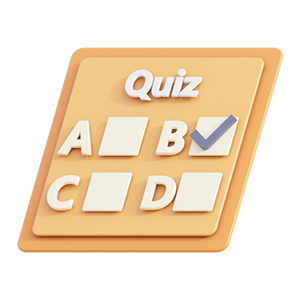ATI RN EXIT EXAM 2020 ACTUAL QUESTIONS & 100% CORRECT ANSWERS/A+ GRADE
A nurse is caring for a client who is receiving phenytoin for management of grand mal seizures and has a new
prescription for isoniazid and rifampin. Which of the following should the nurse conclude if the client develops
ataxia and incoordination?
A. The client is experiencing an adverse reaction to rifampin
B. The client’s seizure disorder is no longer under control
C. The client is having adverse effects due to combination antimicrobial therapy
D. The client is showing evidence of phenytoin toxicity
1. A nurse is planning care for a preschool-age child who is in the acute phase Kawasaki disease.
Which of the following interventions should the nurse include in the plan of care?
A. Give scheduled doses of acetaminophen every 6 hr
B. Monitor the child’s cardiac status
C. Administer antibiotics via intermittent IV bolus for 24 hr
D. Provide stimulation with children of the same age in the playroom
2. A nurse is planning an educational program for high school students about cigarette smoking. Which
of the following potential consequences of smoking is most likely to discourage adolescents from
using tobacco?
A. Use of tobacco might lead to alcohol and drug abuse
B. Smoking in adolescence increases the risk of developing lung cancer later in life
C. Use of tobacco decreases the level of athletic ability
D. Smoking in adolescence increases the risk of lifelong addiction
3. A nurse is assessing a client who is prescribed spironolactone. Which of the following
laboratory values should the nurse monitor for this client?
A. Total bilirubin
B. Urine ketones
C. Serum potassium- diuretic that retains potassium= hyperkalemic risk
D. Platelet count
4. A nurse has agreed to serve as an interpreter for an older adult client who is assigned to another
nurse. Which of the following statements by the nurse indicates an understanding of this role?
A. “I will let the client know that I am available as the interpreter.”
B. “I will receive a small fee for interpreting for this client.”
C. “I am glad I’m available today, but when I’m not, you can use a family member.”
D. “I will let the client know that an interpreter is unavailable during the night shift.”
5. A nurse in a pediatric unit is preparing to insert an IV catheter for 7-year- old. Which of
the following actions should the nurse take?
A. Tell the child they will feel discomfort during the catheter insertion.
B. Use a mummy restraint to hold the child during the catheter insertion.
C. Require the parents to leave the room during the procedure.
D. None of the Above
6. A nurse is caring for a client who has arteriovenous fistula which of the following
findings should the nursereport?
A. Thrill upon palpation.
B. Absence of a bruit.
C. Distended blood vessels
D. Swishing sound upon auscultation.
7. A nurse is providing discharge teaching for a client who has an implantable
cardioverter defibrillator which of the followingstatements demonstrates
understanding of theteaching?
A. “I will soak in the tub rather and showering”
B. “I will wear loose clothing around my ICD”
C. “I will stop using my microwave oven at home because of my ICD”
D. “I can hold my cellphone on the same side of my body as the ICD”
8. A nurse is caring for a client who is at 14 weeks gestation and reports feelings of
ambivalence about being pregnant. Which of the following responses should the
nursemake?
A. “Describe your feelings to me about being pregnant”
B. “You should discuss your feelings about being pregnant with your
provider”
C. “Have you discussed these feelings with your partner?”
D. “When did you start having thesefeelings?”
9. A nurse is planning care for a client who has a prescription for a bowel- training
program following a spinal cord injury. Which of the following actions should the nurse
include in the plan of care?
A. Encourage a maximum fluid intake of 1,500 ml per day.
B. Increase the number of refined grains in the client’s diet.
C. Provide the client with a cold drink prior to defecation.
D. Administer a rectal suppository 30 minutes prior toscheduled defecation times.
10. A nurse is performing physical therapy for a client who has Parkinson’s disease. Which of
the following statements by the client indicates the need for a referral to physical therapy?
A. “I have been experiencing more tremors in my left arm than before”
B. “I noticed that I am having a harder time holding on to my toothbrush”
C. “Lately, I feel like my feet are freezing up, as they are stuck to the ground”
D. “Sometimes, I feel I am making a chewing motion when I’m not eating”
11. A nurse is reviewing laboratory data for a client who has chronic kidney disease. Which of the
following findings should the nurse expect?
A. Increased creatine.
B. Increased hemoglobin.
C. Increased bicarbonate.
D. Increased calcium.
12. A nurse is administering a scheduled medication to a client. The client reports that the medication
appears different than what they take at home. Which of the following responses should the nurse
take?
A. “Did the doctor discuss with you that there was a change in this medication?”
B. “I recommend that you take this medication as prescribed”
C. “Do you know why this medication is being prescribed to you?”
D. “I will call the pharmacist now to check on this medication”
13. A charge nurse is recommending postpartum client discharge following a local disaster.
Which of the following should the nurse recommend for discharge?
A. A 42-year-old client who has preeclampsia and a BP of 166/110 mm Hg.
B. A 15-year-old client who delivered via emergency cesarean birth 1 day ago.
C. A client who received 2 units of packed RBCs 6 hr. ago for a postpartum hemorrhage.
D. A client who delivered precipitously 36 hr. ago and has a second-degree perineal laceration.
14. A nurse in a provider’s office is reviewing the laboratory results of a group of clients. Which to report?
A. Herpes simplex.
B. Human papillomavirus
C. Candidiasis
D. Chlamydia
15. A nurse is providing discharge teaching for a group of clients. The nurse should recommend a
referral to a dietitian
A. A client who has a prescription for warfarin and states “I will need to limit how much spinach I eat”.
B. A client who has gout and states, “I can continue to eat anchovies on my pizza.”
C. A client who has a prescription for spironolactone and states “I will reduce my intake of foods that
contain potassium”.
D. A client who has a prescription for spironolactone and states “I’ll plan to take my calcium
carbonate with a full glass of water”.
16. A nurse is preparing to measure a temperature of an infant. Which of the following action should the
nurse take?
A. Pull the pinna of the infant’s ear forward before
inserting the probe.
B. Insert the probe 3.8 cm (1.5in) into the infant’s rectum.
C. Insert the thermometer in front of the infant’s tongue.
D. Place the tip of the thermometer under the center of the
infant’s axilla.
17. A nurse in a pediatric clinic is teaching a newly hired nurse about the varicella rooster.
Which of the following information should the nurse include?
A. Children who have varicella are contagious until vesicles are crusted.
B. Children who have varicella should receive the herpes
zoster vaccination.
C. Children who have varicella should be placed in droplet
precaution.
D. Children who have varicella are contagious 4 days
before the first vesicle eruption.
18. A nurse is reviewing the laboratory results of a client who has rheumatoid arthritis. Which
of the following findings should the nurse report to the provider?
A. WBC count 8,000/mm3.
B. Platelets 150,000/mm3.
C. Aspartate aminotransferase 10 units/L.
D. Erythrocyte sedimentation rate 75 mm/hr
19. A nurse is caring for a client who has generalized petechiae and ecchymoses. The nurse should
expect a prescription for which of the following laboratory tests?
A. Platelet count.
B. Potassium level.
C. Creatine clearance.
D. Prealbumin.
20. A nurse is caring for a client following application of a cast. Which of the following actions should the
nurse take first?
A. Place an ice pack over the cast.
B. Palpate the pulse distal to the cast.
C. Teach the client to keep the cast clean and dry.
D. Position the casted extremity on a pillow.
21. A nurse is caring for a client who has vision loss. Which of the following actions should the nurse
take? (Select all that apply)
A. Keep objects in the client’s room in the same
place.
B. Ensure there is high-wattage lighting in the
client’s room.
C. Approach the client from the side.
D. Allow extra time for the client to perform tasks.
22. A nurse is caring for a client who is newly diagnosed with pancreatic cancer and has questions
about the disease. To research the nurse should identify that which of the following electronic
database has the most comprehensive collection of nursing (Unable to read) articles?
A. MEDLINE
B. CINAHL.
C. ProQuest.
D. Health Source.
23. A nurse in an emergency department is assessing newly admitted client who is experiencing
drooling and hoarseness following a burn injury. Which of the following should actions should
the nurse take first?
A. Obtain a baseline ECG.
B. Obtain a blood specimen for ABG analysis.
C. Insert an 18-gauge IV catheter.
D. Administer 100% humidified oxygen.
24. A nurse is planning care for a client who has unilateral paralysis and dysphagia following a
right hemispheric stroke. Which of the following interventions should the nurse include in
the plan?
A. Place food on the left side of the client’s mouth when he is ready to eat.
B. Provide total care in performing the client’s ADLs.
C. Maintain the client on bed rest.
D. Place the client’s left arm on a pillow while he is sitting.
25. A nurse is caring for a client who is in a seclusion room following violent behavior. The client
continues to display aggressive behavior. Which of the following actions should the nurse take?
A. Express sympathy for the client’s situation.
B. Speak assertively to the client.
C. Stand within 30 cm (1 ft) of the client when speaking with them.
D. Confront the client about this behavior.
26. A nurse is caring for a client who is receiving brachytherapy for treatment of prostate cancer. Which of the
following actions should the nurse take?
A. Cleanse equipment before removal from the client’s room.
B. Limit the client’s visitors to 30 min per day.
C. Discard the client’s linens in a double bag.
D. Discard the radioactive source in a biohazard bag
27. A nurse is caring for a client who has severe preeclampsia and is receiving magnesium sulfate
intravenously. The nurse discontinues the magnesium sulfate after the client displaces toxicity.
Which of the following actions should the nurse take?
A. Position the client supine
B. Prepare an IV bolus of dextrose 5% in water
C. Administer methylergonovine IM
D. Administer calcium gluconate IV
28. A charge nurse is teaching new staff members about factors that increase a client’s risk to become
violent. Which of the following risk factors should the nurse include as the best predictor of future
violence?
A. Experiencing delusions
B. Male gender
C. A history of being in prison
D. Previous violent behavior
29. A nurse is preparing to perform a sterile dressing change. Which of the following actions should
the nurse take when setting up the sterile field?
A. Place the cap from the solution sterile side up on clean surface
B. Open the outermost flap of the sterile kit toward the body→ flap AWAY from the body's
first
C. Place the sterile dressing within 1.25 cm (0.5in) of the edge of the sterile field → 2.5 cm (1-
inch) border around any sterile drape or wrap that is considered contaminated.
D. Set up the sterile field 5 cm (2 in) below waist level→ it says BELOW waist level; should be
ABOVE waist level
30. A nurse is providing teaching to an older adult client about methods to promote nighttime sleep.
Which of the following instructions should the nurse include?
A. Eat a light snack before bedtime
B. Stay in bed at least 1 hour if unable to fall asleep
C. Take a 1hr nap during the day
D. Perform exercises prior to bedtime
31. A nurse is assessing the remote memory of an older adult client who has mild
dementia. Which of the following questions should the nurse ask the client?
A. “Can you tell me who visited you today?”
B. “What high school did you graduate from?”
C. “Can you list your current medications?”
D. “What did you have for breakfast yesterday?”
32. A nurse is providing teaching to an adolescent who has type 1 diabetes mellitus. Which of the
following goals should the nurse include in the teaching?
A. HbA1c level greater than 8%- 6.5 - 8 is the target reference. >
B. Blood glucose level greater than 200 mg/dL at bedtime
C. Blood glucose level less than 60 mg/dL before breakfast- < 70 = HYPOGLYCEMIC
D. HbA1c level less than 7%
Preview document (3 van de 25 pagina's)
Voordelen van Knoowy
€ 16,99
 Niet tevreden? Geld terug
Niet tevreden? Geld terug
 Document direct te downloaden
Document direct te downloaden
 € 0,50 korting bij betalen met saldo
€ 0,50 korting bij betalen met saldo
-
 Ontvang gratis oefenvragen bij document
Ontvang gratis oefenvragen bij document

Specificaties
- School: Chamberlain College Of Nursing
- Opleiding: NURSING
- Vaknaam: Nutrition
- Alle documenten voor dit vak ›
- Vakcode: ATI
- Tentamendatum: 2020
- Studiejaar: 2020
Document
- Rubriek: Tentamens
- Gemaakt op: 10-07-2024
- Type: .pdf
- Pagina's: 25
- Taal: English
Tags
Verkoper
Hi there! I'm Resource Expert, your go-to source for top-notch academic resources tailored to help you excel in your studies. Whether you're tackling math, science, humanities, or any subject in between, I've got you covered with comprehensive study guides, practice tests, and expertly crafted notes. With years of experience in academic support, I understand the challenges students face, and my mission is to make your learning journey smoother and more successful.
Why Choose Resource Expert's Resources?
Quality: Rigorously researched and meticulously prepared materials.
Variety: Resources for all subjects and levels, from high school to university.
Support: Dedicated to helping you achieve your academic goals.
Browse through my collection and find the tools you need to ace your exams and projects. Let's unlock your academic potential together!
Verdienen aan je samenvattingen?
Vakken van NURSING - Chamberlain College Of Nursing
Meer NURSING ›ati comprehensive comprehensive predictor computer science fundamentals health care health care / nursing health care/ nursing healthcare hesi hesi rn exit maternal newborn med surg medical nursing medical surgical mental health nurs nursing nursing & health nutrition pathophysiology pediatrics pharmacology test bank tncc
Al meer dan 146.000 tevreden studenten
-
larbi
Een goede keuze voor samenvattingen. Je bespaart tijd en energie.
-
Jen DM
Jullie website is top! Het heeft me al veel geholpen. Zeker omdat ik thuis studeer!
-
iljanijenhuis
Het is een fijne en uitgebreide website met helpende documenten en samenvattingen!
-
Anneke
Soms koop ik meerdere samenvattingen over 1 boek. Dit helpt mij als ik onvoldoende tijd heb om het hele boek te lezen en zelf geen samenvatting kan maken.
-
latijn
Kijk voor samenvattingen ook eens op Knoowy. Goede samenvattingen en betaalbaar.
-
tarikkkk
Knoowy is heel handig om te gebruiken en je vind snel het materiaal dat je nodig hebt.
-
larbi
Een goede site voor samenvattingen en leren. Ik kan iedereen aanraden om deze site te gebruiken.
-
Nadia Kasmi
Altijd tevreden over Knoowy! Reeds vele samenvattingen gedownload maar ook geüpload.
 Actie: ontvang 10% korting bij aankoop van 3 of meer items!
Actie: ontvang 10% korting bij aankoop van 3 of meer items!
Actie: ontvang 10% korting bij aankoop van 3 of meer items!








